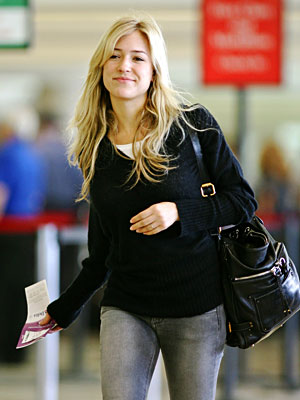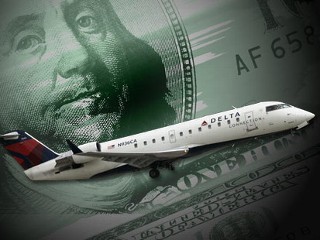After years of shrinking benefits and increasing fees, frequent-flier programs are courting their most loyal customers again.
In recent weeks, American Airlines introduced new awards for one-way flights; United dropped its $75 to $100 fees for booking an award within three weeks of travel; and Delta Air Lines made it easier for elite frequent fliers to retain their V.I.P. status.
Carriers have also been dangling mileage offers, including double-mile promotions, and have even resurrected bonuses for booking online.
Those who follow the programs describe the changes as a slight shift in a more consumer-friendly direction, giving customers more ways to earn and redeem miles.

“What we’re seeing is a bit of a resurgence on the airlines’ part in focusing on their frequent-flier programs,” said Tim Winship, who tracks loyalty programs for SmarterTravel.com. But he added that the issue members care about most — being able to use their miles for free tickets — remains a challenge, especially with planes flying nearly full.
“I think award availability remains the elephant in the room,” he said. “The travel slump has not resulted in any increase in award availability, and in fact, if anything my sense is that people are having a more difficult time now.”
That assessment, while hotly debated on travel Web sites, is difficult to confirm.
Randy Petersen, founder of the frequent-flier hubs InsideFlyer.com and FlyerTalk.com, said 2008 was a record year for award redemption, which he attributed to travelers using miles for more mundane trips, like visits to relatives in less exotic locales.

“In a good economy, everyone wants to use their miles to go to Hawaii, London or San Francisco,” he said. “But when the recession hit, award redemption really started to spread out because people were using their miles not as much for vacation as necessary travel.”
Another factor spurring award redemption, Mr. Petersen said, has been the shift to “dynamic pricing.” If a seat that requires 25,000 miles is available for the outbound leg of a trip, but there is only a 50,000-mile seat on the return, many airlines now offer the itinerary for an amount in between — say, 37,500 miles — rather than charging the higher price for the entire trip.
In a similar vein, the new one-way award from American Airlines lets members book a flight after as little as 12,500 miles, a good option for students returning to college or snowbirds heading south for the winter.
There have also been changes in financial regulations that require airlines to account for unused frequent-flier miles as a liability, which has motivated carriers to make awards easier to redeem.
“There really is an incentive now for the airlines to get all of their miles redeemed because it’s expensive for them to carry them as a liability,” Mr. Petersen said.
“There really is an incentive now for the airlines to get all of their miles redeemed because it’s expensive for them to carry them as a liability,” Mr. Petersen said.

Even so, he acknowledged that as travelers prioritize low-priced tickets over flying with a preferred airline, carriers need to work harder to earn loyalty, especially among their elite fliers.
Delta Airlines, for example, recently announced new benefits for its elite SkyMiles members, which take effect in 2010.
Among the more significant changes, Delta added a “diamond” tier to its existing levels of Medallion membership (silver, gold and platinum) — all referred to as having elite status, which comes with benefits like free upgrades and fee waivers.
Paul R. Skrbec, a Delta spokesman, said adding a fourth tier encouraged Medallion members to stay with Delta, rather than switch to another carrier after obtaining platinum status. The higher the tier, the better the benefits. For example, a diamond member will get a 125 percent mileage bonus versus a 100 percent bonus for platinum elites.
Seth Miller, a freelance technology consultant in Manhattan, is one of the elite frequent fliers airlines have been courting, having maintained top-tier platinum status in Continental’s OnePass program for 10 years.

“The legacy airlines especially are doing as much as they can to generate loyalty, and these days that means crazy bonuses — double miles for this, triple miles for that, miles are being given out like candy on Halloween,” Mr. Miller said.
“It’s great now,” he added, but he worries that the airlines’ largess could have a downside. “The question is, what happens when everyone tries to take advantage of all these benefits that are being handed out now? I’ve got elite status, but am I going to be able to get upgrades or will everybody else have status, too?”
Another question is whether nonelite frequent fliers have dropped off the radar as airlines focus on their biggest spenders — a message that average consumers may be responding to by shifting their loyalty to other rewards programs, like those offered on credit cards.
A research company that tracks loyalty programs found that membership in credit card reward programs surpassed membership in frequent-flier programs for the first time in 2009.
According to Colloquy, the company that conducted the research, the average household in the United States is signed up for 14 loyalty programs, ranging from grocery stores and gas stations to airlines and hotels, but actively participates in only six.
The recession has diminished participation in multiple travel programs, said Kelly Hlavinka, a partner at Colloquy. She said this could bring about a return to the original premise of loyalty rewards: to cement a relationship with just one airline or hotel.
“Savvy travelers may be saying, ‘I may not be able to spread my business out to two or three airlines, but I can consolidate my travel with one company,’ ” Ms. Hlavinka said. “The real opportunity for airlines is to try to keep that business with their airline.”



No comments:
Post a Comment